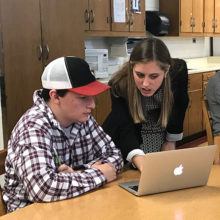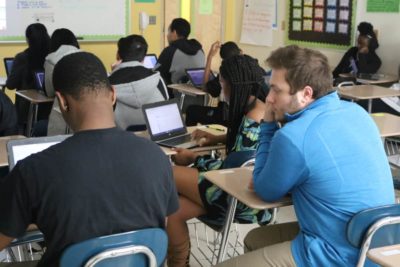As I write this, I’m sitting on a plane looking down on the snowy mountains of the West Coast. I’m flying to New Zealand by way of San Francisco, where I’ll be participating in the Teach for All-Oak Foundation Reaching All Learners Fellowship for the next week. Over the course of five days, we will visit schools, learn different instructional strategies, and experience the Māori culture.
Teach for All is a global network of 50 independent partner organizations and the organization that connects and supports them. Partner organizations in the network include Teach for America, Teach for Bulgaria, Enseña Chile, Teach for India, and many others around the world. Check out this map to see all the organizations.
For the past four years, the Oak Foundation has funded a yearly fellowship to bring together educators and teacher coaches from across the network to learn and share strategies to reach all learners. Part of the fellowship experience involves spending a week together to develop projects which the fellows will then implement in their home countries.
This year, 16 fellows from 16 different countries are spending the week in Auckland, New Zealand, learning, sharing, and developing their projects to help the teachers they work with back home reach all learners — and I get to join them to share what they’re learning.
Why the focus on reaching all learners?
Students learn in many different ways. While issues such as blindness, hearing loss, or physical disabilities impact the way some students learn, others have learning challenges like dyslexia or attention deficit and hyperactivity disorder (ADHD). Many students just have difficulty learning the way teachers expect them to learn — sitting and listening for an hour while the teacher lectures.
In my colleague Rupen’s article, David Flink, founder of the mentoring organization Eye to Eye, explained: “… it’s really easiest to understand this as brains are just hardwired in different ways. One in five people in America have a hardwiring that makes it difficult for them to do things like read and to work with numbers.”
While there are many terms floating around to describe students with ADHD or dyslexia, for example, we can use the term students with learning differences to capture the myriad ways students learn differently. Teach for All defines students with learning differences as “students who have brain based learning challenges (such as dyslexia) as well as students who struggle in traditional learning environments for a variety of reasons.”
For more on learning differences, read Rupen’s series here.
This week, fellows are exploring a number of different strategies to reach all learners with a focus on metacognition. Learn more about metacognition below, and follow me on Twitter @mosborne917 to see what we are learning and to follow our journey in New Zealand.
What is metacognition and why is it important?
When you learn something new, do you think about how you might learn the material or skill best? While you are learning, do you think about how you are learning and make adjustments if you recognize that you aren’t actually learning?
If so, you are practicing metacognition. Metacognition is often defined as learning to learn or thinking about our own thinking and learning. Rae Jacobson from the Child Mind Institute explained it as:
“Metacognition is a big word for something most of us do every day without even noticing. Reflecting on our own thoughts is how we gain insight into our feelings, needs, and behaviors — and how we learn, manage, and adapt to new experiences, challenges, and emotional setbacks.”
Metacognitive approaches aim to help students become self-aware and regulate their learning. Research demonstrates that metacognitive strategies have a positive impact on student learning.
Strategies to improve metacognition focus on helping students plan, monitor, and evaluate their own learning. Planning for learning involves asking students to think about how they will prepare for an assignment or task before actually starting it. For example, if students have a big test coming up, the teacher might ask them to write down how they are going to prepare. This is a metacognitive strategy because it asks students to think about how they learn.
Strategies to help students monitor their learning involve asking students to reflect on their progress as they advance through a task or assignment. In our test example, a metacognitive strategy might be to ask students to pause while they are preparing and ask themselves whether their test preparation strategies are working. If not, how can they adjust?
Finally, reflecting on your learning after the fact is a key part of metacognition. After the test, students should ask themselves whether or not their test preparation strategies worked and why they either worked or didn’t work. The reflection process prompts learners to think about what they might do differently next time to improve their learning.
For more on metacognitive strategies and how they improve student learning, check out these resources:
- Metacognition: How Thinking About Thinking Can Help Kids
- Metacognition and self-regulation
- Metacognition
- Strategies for teaching metacognition in classrooms
- Boosting Metacognition and Executive Functions in the Classroom
Editor’s note: The Oak Foundation supports the work of EducationNC.
Correction: A previous version of this article incorrectly stated that the Teach for All-Oak Foundation Reaching All Learners Fellowship was a year long. It is a yearly fellowship that lasts for six months.



